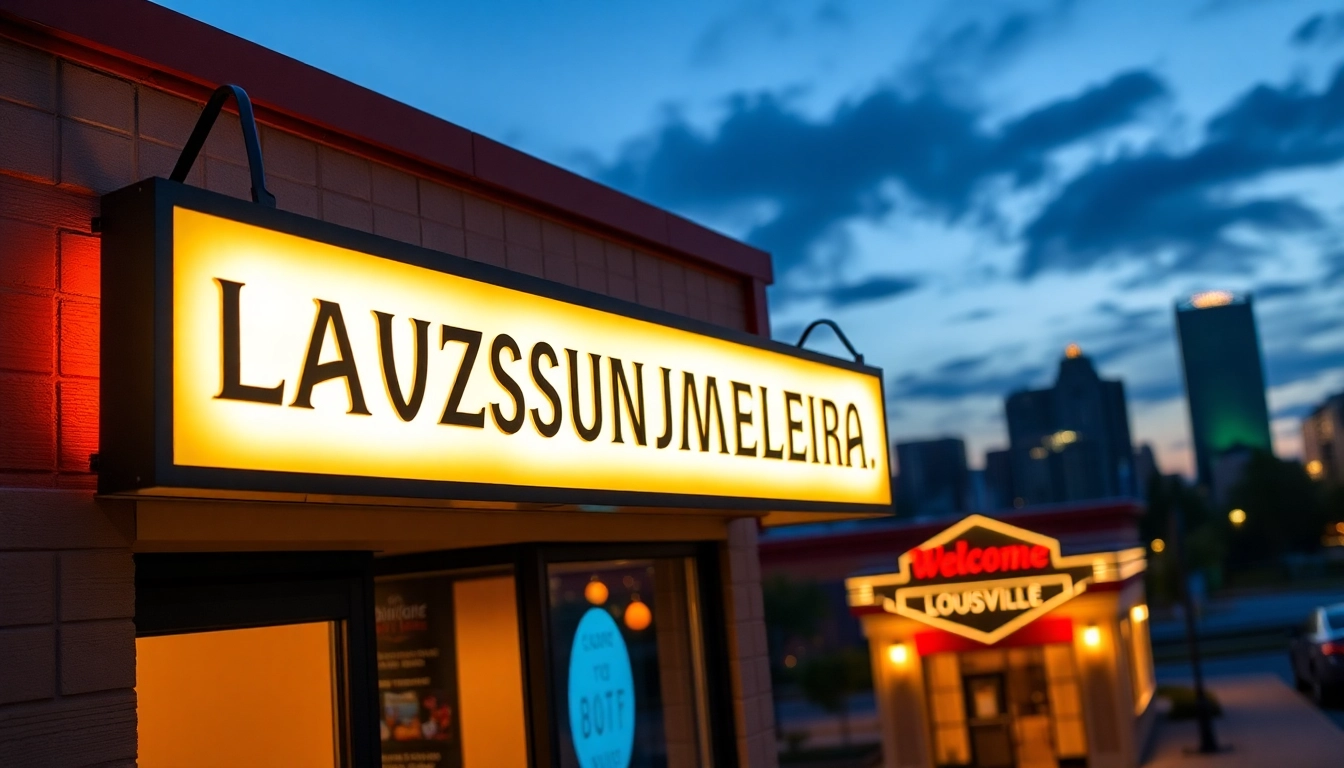Comprehensive Guide to Container Rental in the UK: Secure, Versatile, and Cost-Effective Solutions
Understanding Container Rental: Types and Uses
Container rental has become an essential service across numerous industries in the UK, offering flexible, secure, and cost-effective solutions for storage, transportation, and construction needs. Whether you’re managing a large-scale logistics operation, setting up a temporary site office, or requiring secure storage during a renovation, container rental provides versatile options tailored to diverse requirements. To navigate this market effectively, it’s crucial to understand the different types of containers available and their primary applications. This comprehensive guide aims to equip you with expert insights into container rental, helping you make informed decisions that optimize your project’s efficiency and security.
Start exploring your options and learn more about container rental services directly at Container rental, where you can find tailored solutions for your needs.
Different Types of Containers Available for Rent in the UK
The UK market offers a broad spectrum of container types, each designed for specific functions ranging from storage to transport. Their sizes, construction materials, and features vary to suit particular applications. Here are the most common types:
- Standard Shipping Containers: These are the most iconic, often measuring 20 or 40 feet in length, made from durable corten steel. They are ideal for transporting goods internationally and can also serve as fixed storage units.
- Storage Containers: Designed primarily for static storage, these units typically feature enhanced security features, weatherproofing, and sometimes insulation. They are often used on construction sites, factories, or for mobile storage needs.
- Refrigerated Containers (Reefers): Equipped with cooling units, these are essential when temperature-sensitive goods—like perishables or pharmaceuticals—must be stored or transported.
- Open-Top Containers: With a removable roof, these containers facilitate the loading of oversized or heavy items, suitable for bulk materials or machinery.
- Fragile or Specialized Containers: These include tanks, hazardous materials containers, or custom conversions tailored to niche industries.
In recent years, the demand for modular, insulated, and environmentally friendly containers has grown significantly, reflecting the UK’s emphasis on sustainable practices and adaptable infrastructure.
The Primary Applications: Storage, Construction, and Transport
Container rental solutions are fundamentally versatile, fitting into three primary zones of application—storage, construction, and transport. Each use case comes with its own set of specifications and performance expectations.
Storage
Storage remains the most common application of rented containers. Businesses and individuals utilize these units to protect goods from theft, weather, and environmental damage. Construction sites, for example, often rent secure storage containers to safeguard tools and materials overnight or for the duration of a project.
Temporary storage containers are also popular among events, festivals, and seasonal businesses needing space that can be easily relocated or accessed at short notice.
Construction
Construction projects require reliable, on-site containers for site offices, worker facilities, and secure storage of sensitive equipment. Renting these containers allows project managers to scale infrastructure quickly and with minimal upfront investment. Additionally, customized containers with insulation, lighting, and ventilation contribute to compliance with health and safety standards.
Transport
Transport containers are the backbone of freight logistics, facilitating the transfer of goods across waterways, railways, and road networks. The rental market supports temporary needs—such as seasonal inventory redistribution, emergency logistics, or short-term project-specific transport—without long-term commitments.
For smaller businesses or startups venturing into export and import activities, container rental provides a flexible, scalable solution without the significant capital expenditure associated with purchasing units.
Choosing the Right Container for Your Project Needs
Selecting the appropriate container requires a thorough assessment of your project’s specific needs, budget, and operational constraints. The key considerations include size, security, durability, and mobility.
Assessing Size and Capacity
Determine the volume of materials or equipment to be stored or transported. Standard sizes like 20ft and 40ft are common, but variations exist, including 10ft, 8ft, and custom dimensions. When estimating, consider future expansion or potential need for additional containers to avoid bottlenecks.
Security Features
Security is paramount, especially for valuable or sensitive items. Look for containers with lockable doors, reinforced steel, and tamper-proof sealing. Some units also include advanced security measures like alarm systems or GPS tracking.
Material Durability and Environmental Resistance
If your container will be exposed to harsh weather conditions, opt for models with proper insulation, corrosion-resistant coatings, and weatherproof seals to prevent rust and water ingress.
Mobility and Logistics
Consider the ease of transportation and positioning on your site. Some providers offer containers with fork pockets for easy lifting or wheels for mobility within a site. Evaluate delivery options, turnaround times, and whether the provider can accommodate your schedule.
Cost-Benefit Analysis
While initial rental costs are important, also factor in additional expenses such as delivery, setup, maintenance, and insurance. Sometimes, investing in higher-quality containers reduces long-term maintenance costs and improves security.
How to Select a Reliable Container Rental Provider
Key Factors to Consider: Quality, Security, and Delivery Options
Ensuring your container supplier is reputable is critical. High-quality containers enhance durability, security, and operational efficiency. Verify their compliance with safety standards and gauge the quality by requesting images, specifications, and warranty details.
Security measures—such as certified locks, tamper-proof features, and monitored access—are non-negotiable for valuables. Delivery logistics—including flexible scheduling, nationwide reach, and on-site installation—affect your project timeline and operational ease.
Evaluating Rental Costs and Flexible Terms
Compare pricing models from different providers. Many support flexible rental durations—daily, weekly, monthly, or long-term arrangements—with discounts for extended periods. Ask about hidden fees such as delivery, collection, and insurance costs. Transparent quotes and clear terms prevent budget overruns.
Assessing Provider Reputation and Customer Reviews
Research customer feedback on independent platforms or industry forums. Reliable providers are often rated highly for customer service, punctuality, and container quality. Consider providers with a proven track record in your region and industry to minimize risks.
Cost Considerations and Rental Logistics
Understanding Pricing Models: Daily, Weekly, and Long-Term Rentals
Serveral pricing structures exist depending on your rental need:
- Daily Rates: Suitable for very short-term projects or initial testing. Typically, these are more expensive per day but flexible for occasional use.
- Weekly & Monthly Rates: Offer better value for medium-term projects, with discounts applied to longer durations.
- Long-term Rentals: When needs extend beyond several months, negotiate for the most favorable rate, often with options for renewal or purchase.
Align your project timeline with these models to optimize costs and avoid unnecessary expenses.
Additional Fees: Delivery, Collection, and Insurance
Always clarify whether delivery and collection are included or charged separately. These fees vary based on distance, site accessibility, and container type. Insurance costs ensure protection against damage or theft during the rental period and are worth considering for high-value items or sensitive cargo.
Maximizing Value Through Proper Planning and Usage
Effective planning minimizes downtime and extra charges. Schedule delivery to coincide with project phases, organize the container’s contents systematically, and ensure secure locking mechanisms to prevent theft or vandalism. Regular inspections sustain container condition, extending lifespan and maintaining security.
Best Practices for Container Usage and Maintenance
Proper Loading, Security, and Environmental Protection
When loading containers, distribute weight evenly to prevent structural stress. Use pallets or other supports to keep items off the floor, aiding in airflow and preventing moisture damage. Lock containers securely, and only authorized personnel should access the contents.
Protect against environmental factors by applying weatherproof covers if necessary and sealing gaps to prevent water ingress. For long-term rentals, consider adding insulation or ventilation for temperature-sensitive goods.
Regular Inspection and Maintenance Tips
Schedule routine inspections to identify rust, door functionality, and security features. Address minor damages immediately—such as repainting corrosion spots or replacing locks—to prevent deterioration. Maintenance extends container lifespan and ensures ongoing safety compliance.
Legal Compliance and Safety Standards for Container Rental
Adhere to local safety regulations concerning container storage and usage. Ensure containers meet UK standards for structural integrity and safety. Proper signage and safe stacking practices also contribute to legal compliance and accident prevention.
Innovative Trends in Container Rental Solutions
Eco-Friendly and Sustainable Container Options
As sustainability becomes a priority, providers now offer eco-friendly containers made from recycled materials or designed to be energy-efficient. Solar-powered units, insulated containers with eco-friendly coatings, and biodegradable packaging options are increasingly available.
These innovations reduce environmental impact and can also lead to cost savings on energy and maintenance.
The Rise of Container Conversions and Modular Structures
Converted containers—turned into offices, cafes, homes, or pop-up shops—are transforming the rental industry. Modular structures allow rapid deployment of customized spaces with features like insulation, electrical wiring, plumbing, and interior finishes.
This approach offers flexibility and reusability, catering to the evolving needs of businesses and communities.
Technology Integration: Tracking, Automation, and Smart Rentals
Advanced technology enhances container rental management. GPS tracking systems monitor location and security. IoT-enabled containers can provide real-time data on temperature, humidity, or damage, reducing risk and maintenance costs. Automated rental platforms streamline booking, scheduling, and billing, improving customer experience and operational efficiency.


